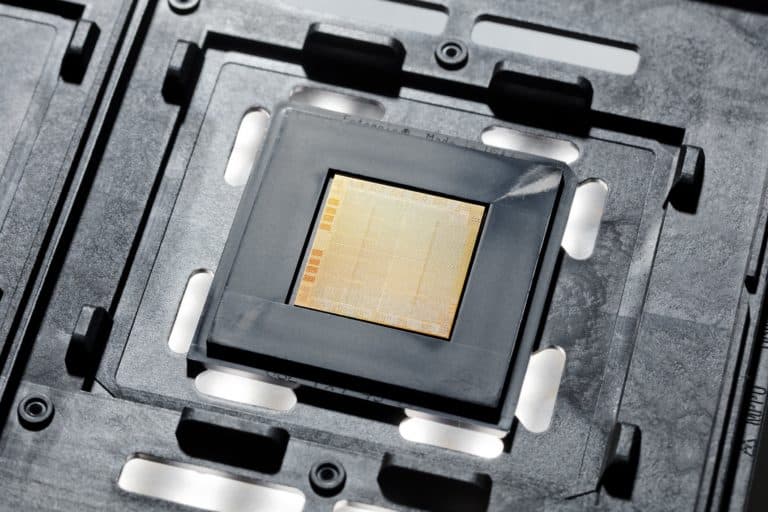IBM expands its processor portfolio with the Power10. This processor is Big Blue’s first 7-nanometer processor, and is particularly suitable for heavy workloads for big data analytics or AI applications.
The IBM Power10 processor is the successor to the 14-nanometer Power9 processor from 2016. This new processor has been in development for over 10 years. It is IBM’s first 7-nanometer processor, and it is a lot faster than its predecessor.
The processor has very high efficiency, up to three times the efficiency of the Power9 processor used in supercomputers. This efficiency makes the IBM Power10 processor especially suitable for applications and solutions that require a large amount of computing power. Think of big data analytics or the use of AI. IBM states that this processor does not require any additional hardware for better deployment. In addition, the extensive efficiency of the Power10 also offers more options for container density.
The Power10 processor will be available in various configurations, of which all specifications are not yet known. In any case, the maximum single-chip module is limited to 15 SMT8 cores. The dual-chip module will have no more than 30 SMT8 cores.
Energy efficient
An important part of the new processor is its improved energy efficiency. According to Big Blue, this improves efficiency in data centers. This, in turn, leads to cost savings while customers can more easily deploy hybrid cloud environments to achieve more work with a smaller footprint.
Memory inception
The processor has ‘memory inception’ to realize more savings. With memory inception, any Power10 processor that is added to a cluster can share memory with other systems in that cluster.
With these clusters, cloud providers can offer more extensive features, for example, artificial intelligence (AI). AI can be provided while deploying fewer servers because memory can be shared. In the end, it also allows customers to rent fewer resources to meet their IT needs.
Security improvements
In the field of security, the introduced IBM Power10 processor offers new possibilities. For example, the Power10 offers hardware-based memory encryption with up to 40 percent faster encryption. This is achieved through new AES cores and other improvements such as ‘homomorphic’ encryption techniques. In addition, the Power10 offers hardware-based protection for containers and other isolation options. This is achieved through the firmware. This makes it possible, among other things, to protect containers in the same virtual machines against external attacks.
In addition, the processor has dynamic execution register control, allowing users to design applications that are more resistant to attacks without sacrificing performance.
Open Access
Like its predecessor Power9, the IBM Power10 processor is open for license use and can be modified by members of the OpenPower Foundation. Members of this partnership include Google, Nvidia, Mellanox and Tyan. Samsung will manufacture the IBM Power10 processor.
Tip: Red Hat feels unbeatable with OpenShift under the wing of IBM
